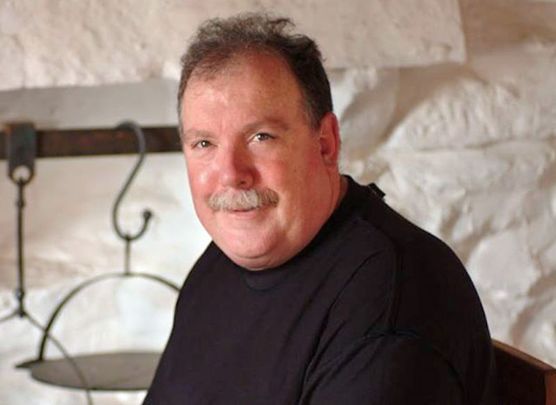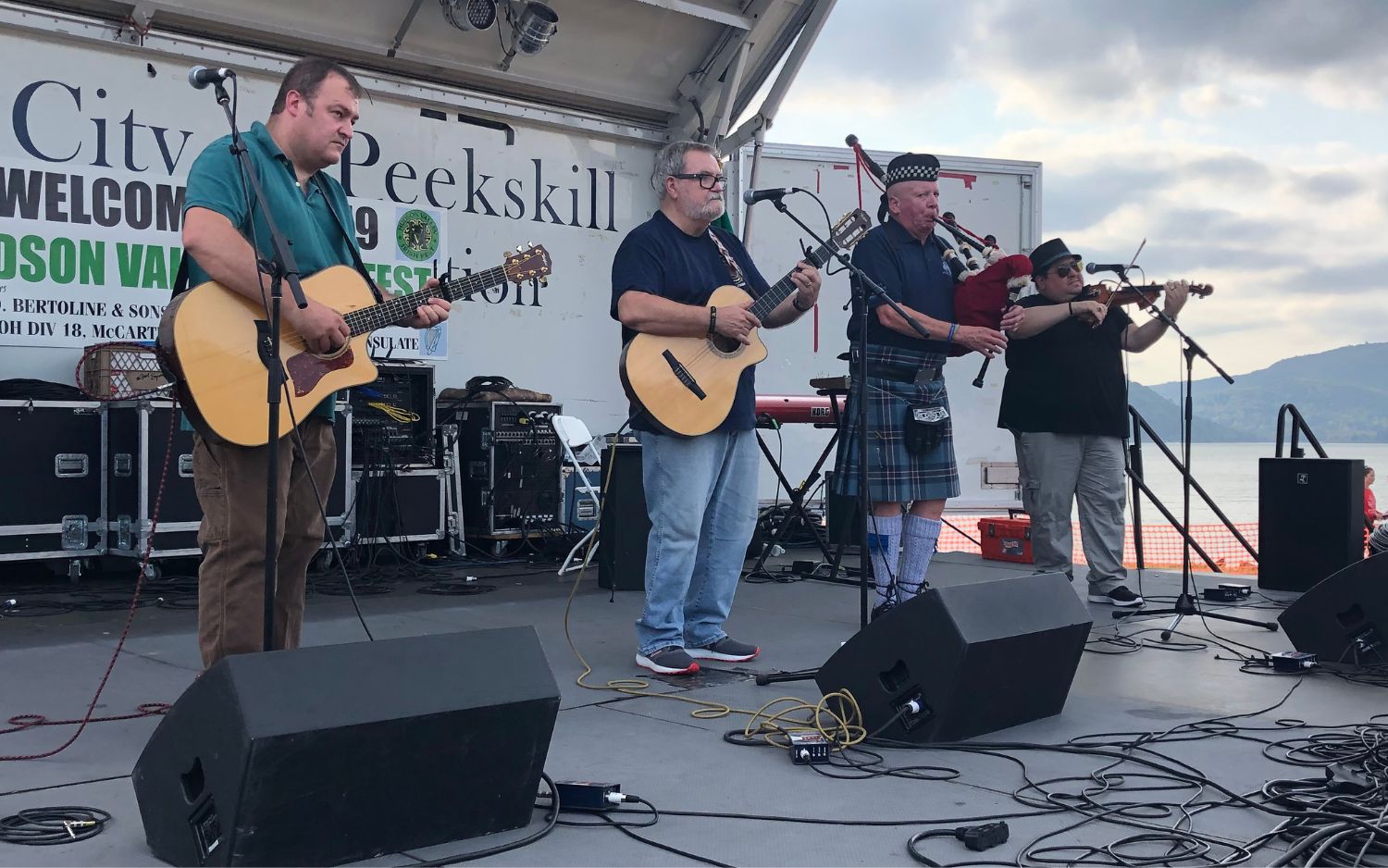Editor’s note: On Wed, July 5, 2023, IrishCentral's sister publication the Irish Voice newspaper, in New York, went to print for the last time. Founded 36 years ago by Niall O’Dowd and edited by Debbie McGoldrick, the community’s beloved source for Irish news will be sadly missed. Their writers reflect back on what the paper has meant to them.
I have been fortunate to have been given this space weekly in the Irish Voice for over two decades by Publisher and Founder Niall O’Dowd and his wife Debbie McGoldrick who served as its Senior Editor. They entrusted me with a broad remit to write about a wide range of trends and events in the realm of traditional Irish music and dance that were deemed noteworthy by me without interference.
That freedom was greatly appreciated by me and I tried to reward their trust by expanding my coverage to both sides of the Atlantic, informing our readership of the vibrancy of Ireland’s traditional arts wherever the creative pathways led me to as I traveled over the years. I couldn’t be more grateful for that opportunity granted by the Irish Voice, and I hope that it served them well and the many people who supported the paper through subscriptions or newsstand sales.
My relationship with the Irish Voice was way more than as a contributor to its journalism the last score of years as I purchased my own copy of every edition since it first appeared on the newsstands in the greater New York area in the latter part of 1987, two years after its sister publication, Irish America magazine was founded by O’Dowd and Patricia Harty.
O’Dowd relocated to New York wisely gauging a fertile field for more contemporary coverage of Irish and Irish American affairs given the rising tide of younger immigrants, legal and many more without status given the state of the Irish economy back in the 1980s.
Brashly declaring he wanted to “give them a voice and not an echo” covering the new landscape, the Irish Voice helped galvanize immigration reform efforts that netted more legal immigrants through the Morrison and Donnelly visa programs.
Taking aim at the conservative old boys club that was the New York City St. Patrick’s Day Parade Committee back in that era was also in O’Dowd’s sights as the Irish Voice regularly rattled its cages.
As a younger journalist with Newsweek magazine, I appreciated the new brand of journalism shaking up the Metropolitan New York Irish community and establishment. It also dovetailed with my own more involved activity in various Irish organizations which needed some sparks to appeal to the newer arrivals if they were to remain relevant.
So, each weekly paper would raise appropriate issues that not only created talking points but also was empowering the Irish community to become more active and assertive in matters concerning them as they had been historically in America.
Nowhere was that more important than in realigning the Irish American role in bringing The Troubles in Northern Ireland to an end. McGoldrick’s steady hand running the newspaper allowed O’Dowd time to build a coalition of successful Irish American businesspeople who saw a more effective way to create a pathway to peace.
The arrival of Bill Clinton into the White House presented an opportunity for a game-changing initiative that led to the Good Friday Agreement which just marked its 25th anniversary.
In just its first decade, the Irish Voice influence on Irish America spread more widely than just circulation figures. And within another decade, O’Dowd’s publishing magic would extend to cyberspace with the founding of IrishCentral.com reaching a worldwide audience.
But all of that is grist for historians to evaluate further as they investigate how Irish America navigated the transition from the 20th century into the 21st century.
Any weekly newspaper to be successful has to offer its readership a steady diet of news and information about entertainment and sports as well to entice readers to regularly delve into its pages for informed coverage by its writers. The role of advertising played no small role either, so if space could be peddled around a series of community events and equally importantly the venues where they would take place it ensured a vibrant community life for Irish America.
In those days, I was also alternating as a presenter and consumer of traditional Irish music activity so once again I followed the diverse and wider array of coverage the Irish Voice featured each week.
Over the years, the cultural cauldron brewing interest in Irish music and the people who regularly brought it to life on the Irish Voice pages were go-to pages for me. In the earliest days, that would have been Terry George and Brendan Shorthall and much later Mike Farragher who provided entertaining coverage in mainstream Irish music and trends, driving punters to the paper with their contemporary coverage.
For those with a penchant for the pure drop of Ireland’s native music, the regular weekly columns penned by deeply engrained writers like Earle Hitchner and Don Meade were necessary reading to take the pulse of what was a thriving burgeoning scene for music in that genre. Their informed opinion and coverage were important assets in the evolution and growth potential of fireside music and the practitioners old and young and everyone in between. Seanie MacPhail followed Don Meade for a couple of years adding a valuable perspective as an Irish emigrant and musician falling into the scene.
The opportunity came my way at the outset of 2003 when then Irish Voice arts editor Tom Deignan encouraged me to contribute to the weekly mix. Like Hitchner and Meade, I was already well inside the evolving universe myself and was somewhat eager to discover a further role I could play in advancing the coverage of what was already a passion for me. And I took to it like a duck to water and am still at it now 20 years later.
From the very outset, I felt writing weekly about Irish music and dance required an extra effort and perspective that I could make my own. I felt fortunate and privileged to have such a vehicle and dubbed my column “From the Hob,” the special seat by the fireplace in an Irish country kitchen where one was both welcomed and afforded a unique place to see all that was happening in front of you.
That responsibility of conveying the essence of Irish culture as it matured beyond the Irish country kitchen to some of the most magnificent stages worldwide never ceased to amaze me, and I took full advantage of that as often as I could. It brought me to many wonderful gatherings and events across America, Canada, and especially Ireland crossing so many paths with the tradition-bearers who ensured it would not only survive but prosper.
It has been an enriching and totally enjoyable run here at the Irish Voice, and I am extremely grateful to Niall O’Dowd and Debbie McGoldrick for the good long ride it provided and thank them for all they have done over 36 years to make our Irish world one worth living in for all of us as we watched it unfold every week.
As I conclude my swansong on the pages of the Irish Voice newspaper ending its run, I must thank the legions of people who turned to my page every week and appreciated my humble efforts at keeping the tradition alive. So many of you would be gracious to share your thoughts when our paths crossed somewhere at an event and offer a much-appreciated comment that I was hitting home for you.
I know that I will continue to share many wonderful days and nights with many of you in the future down the road. And nothing would give me greater pleasure if my legacy in this space encourages you to continue to support live Irish music and dance wherever you find it.
It is up to you now to make yours an active voice in the celebration of our amazing Irish heritage and not just an echo of its past.
Go raibh mille maith agat!




Comments